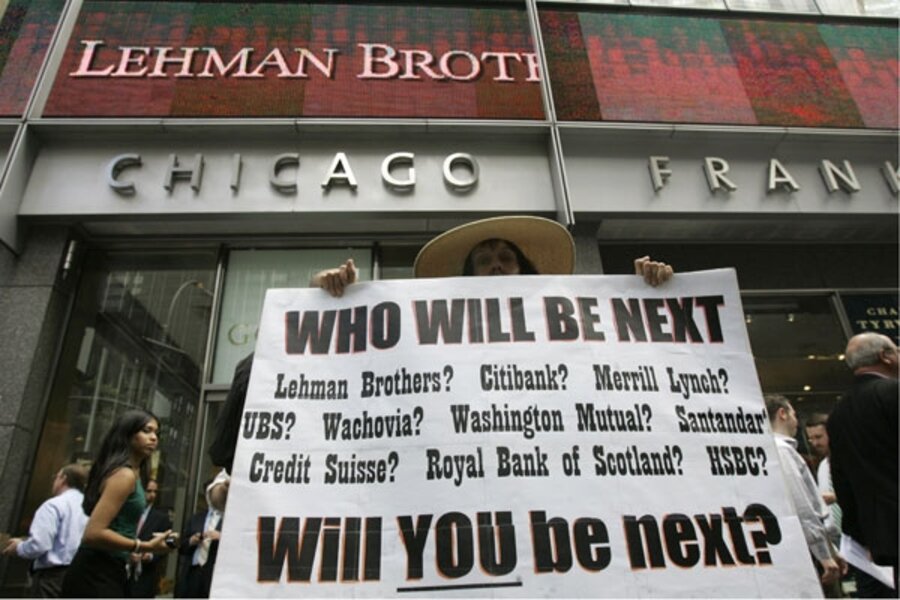Lehman's failure: What US learned in the past year
Loading...
A year ago this week the investment firm Lehman Brothers failed – and it seemed as if the whole world economy might topple over as well.
The sense of vulnerability didn’t hit all at once on Sept. 15, when Lehman entered bankruptcy. But an ongoing financial meltdown and economic depression looked like a real possibility.
Uncertainty brought key credit markets to a halt. The recession deepened and spread far beyond the troubled housing markets.
Today the fears have receded. The crisis has eased. A depression didn’t happen.
Why the turnaround?
The post-Lehman aftershocks pushed policymakers into high gear, resulting in an enormous and controversial level of government intervention in the economy.
This massive rescue effort leaves a mixed legacy:
It has shown that policies can help to contain damage in a financial crisis. But it hasn’t guaranteed any fix of underlying problems in the financial system.
The failure of Lehman itself is one of the most controversial elements in the story – something that will be debated for years.
Some economists argue that the government should have engineered a rescue for Lehman despite its loss-riddled investment portfolio, and that the recession would have been much milder as a result. Others say policymakers had limited options in the Lehman case, and that the firm’s failure served as a needed wakeup call.
Without a catalyst such as Lehman, for example, Congress would have had little political momentum to create the $700 billion Troubled Asset Relief Program (TARP), which has been used to shore up a host of firms since last October.
The TARP’s investments in a range of firms, begun under the Bush administration, have been accompanied by large Federal Reserve lending programs. The Obama administration followed with its own moves to bolster banks (including a “stress test” process), to help homeowners avoid foreclosure, and to nudge the economy forward with tax cuts and government spending.
Result: Despite high unemployment, the economy may finally start growing again in the current quarter.
“Such a turnaround was not inevitable, nor was it an accident,” Treasury Secretary Timothy Geithner told a congressional hearing last week.
Yet for all the signs of progress, the financial system remains vulnerable. A few examples:
• Banks still face uncertain losses on bad loans, which could rise if home prices keep falling.
• Complex investments known as derivatives still need better oversight, many finance experts say.
• Regulators need to rethink how they can better identify risks and head them off, before they reach the scale seen last year.
• Moreover, the crisis-management efforts did nothing to resolve the quandary over firms that are “too big to fail” – so large and intertwined with the financial system that the government feels compelled to come to the rescue if they stumble.
Lehman did fail, of course, but in its wake regulators became more determined not to have that happen again. And regulators have blessed corporate mergers that have made the largest banks even bigger.
A fix isn’t easy, but it may involve requiring higher capital cushions for the largest financial institutions, adjusting the way banker pay incentives are designed, and giving regulators new tools for winding down large firms when they fail.
-----
Follow us on Twitter.





